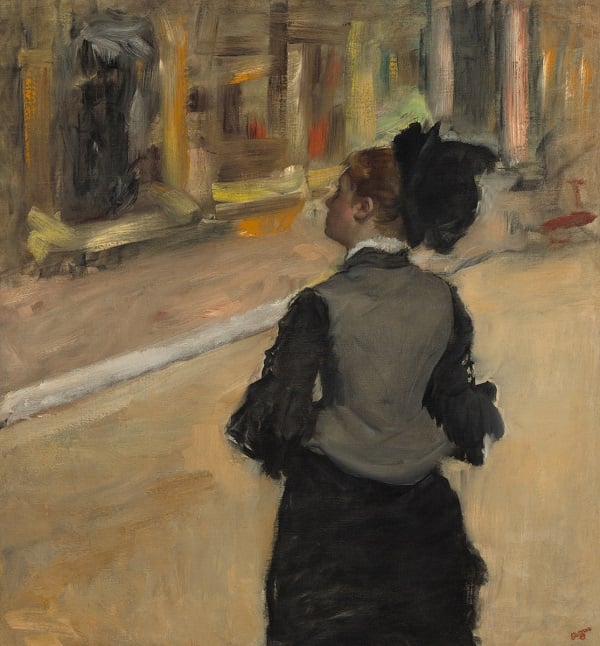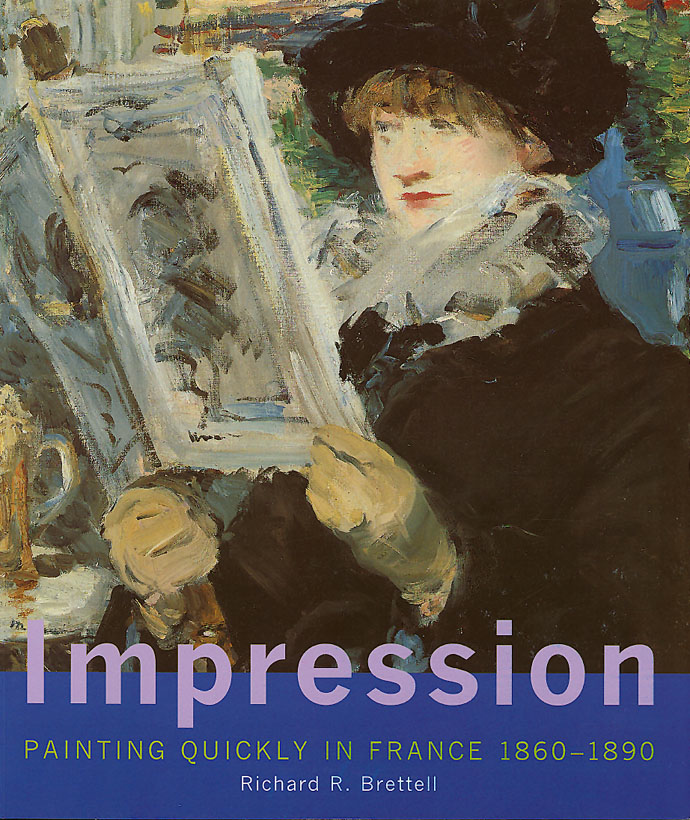
june 17–september 9, 2001
Edgar Degas
Edgar Degas (1834-1917) was largely an indirect painter, almost incapable of abandoning himself to the canvas, to an unplanned pictorial improvisation. Indeed, throughout his life he returned time and again to works he had earlier discarded, refreshing, altering, resizing, or scraping the canvas in a career of relentless self-criticism. Yet reexamination of his oeuvre in the context of this exhibition reveals that he was capable of creating spontaneous, Impression-like images. Woman Viewed from Behind, thickly painted with large brushes, is particularly direct and fluent in its handling.

Hilaire-Germain-Edgar Degas
French, 1834-1917
Woman Viewed from Behind
c. 1879
Oil on canvas
32 x 29 3/4 inches
National Gallery of Art, Washington, D.C. Collection of Mr. and Mrs. Paul Mellon

The "point" of Impressionist art was to capture the fleeting moment, the transient effect of a certain place, person, or time. Impressionist artists worked on-site with speed and directness, hoping to distinguish their works with a new freshness, immediacy, and truthfulness. Yet the paintings they exhibited were in fact almost always completed in the studio later. This beautifully illustrated book investigates for the first time the works that might truly be called "Impressions"—paintings that appear to be rapid transcriptions of shifting subjects but were nonetheless considered finished by their makers. Renowned Impressionist scholar Richard R. Brettell identifies and discusses Impressions by some of the best-known artists of the period, including Manet, Monet, Renoir, Sisley, Morisot, Degas, Pissarro, and Caillebotte.
The book surveys the various practices of individual artists in the making, signing, exhibiting, and selling of Impressions. Brettell discusses the pictorial theories behind the paintings, the sales strategies for them, and the various forms they took, including works completed in one sitting, "apparent" Impressions, and repeated Impressions. In a concluding chapter, the author considers a small group of works by Vincent van Gogh, who painted with an almost fanatical rapidity and was the only major Post-Impressionist painter to push the aesthetic of the Impression even further.
This book is the catalogue for an exhibition at the National Gallery in London from November 1, 2000, to January 28, 2001, the Van Gogh Museum in Amsterdam from March 2 to May 20, 2001, and the Clark Art Institute from June 17 to September 9, 2001.
240 pages, 9 3/8 x 11 inches
183 color and six black-and-white illustrations
2000
Published in association with Yale University Press
ISBN 0-300-08446-3 (hardcover)
ISBN 0-300-08447-1 (softcover)
